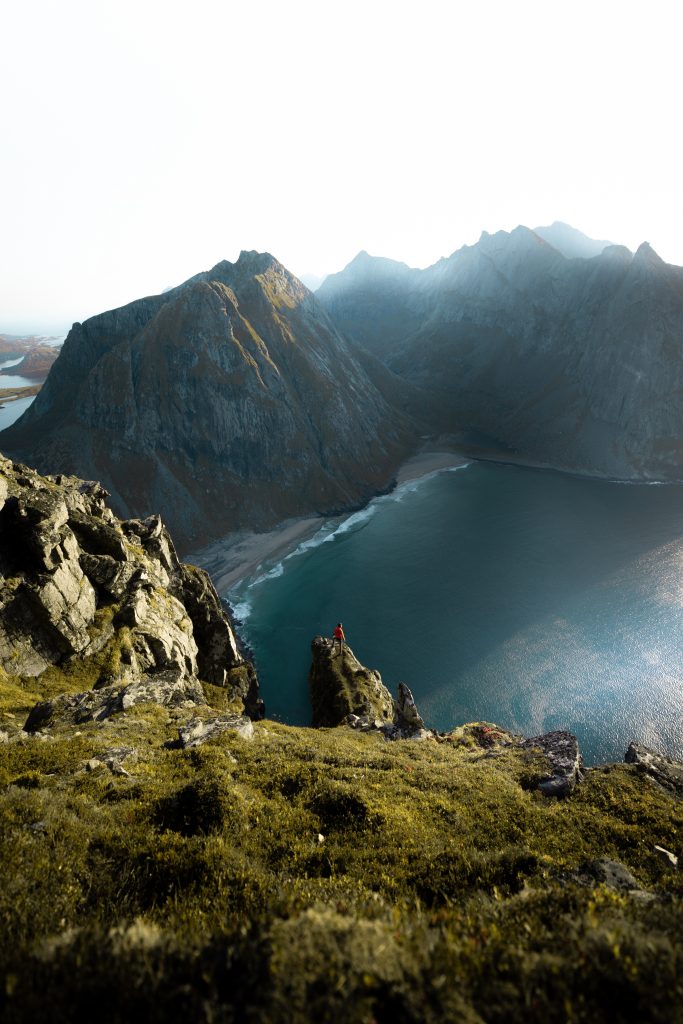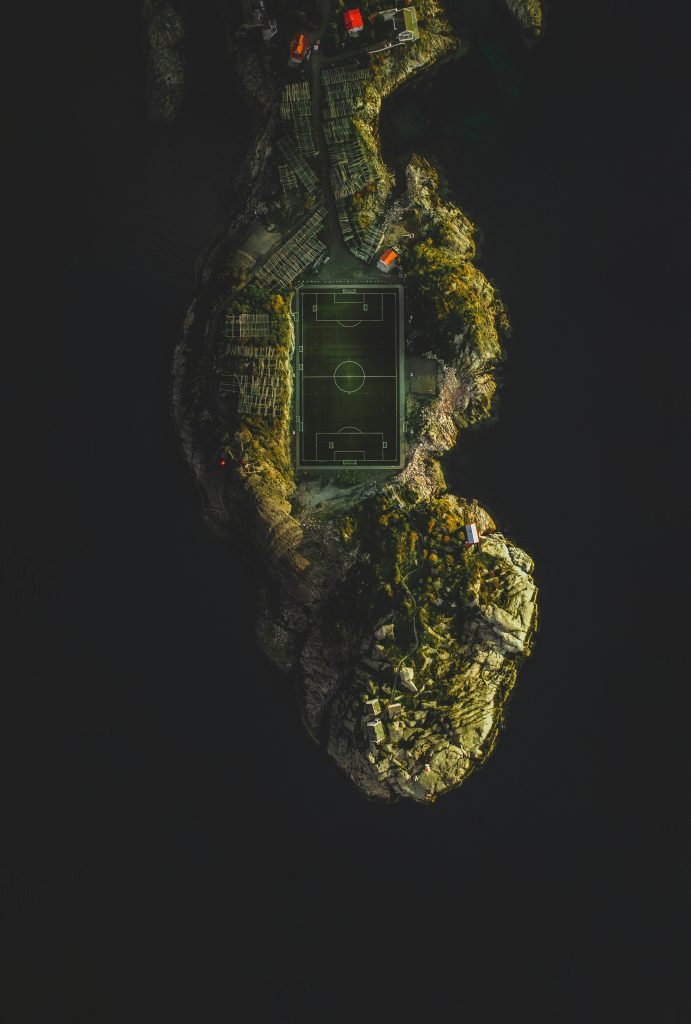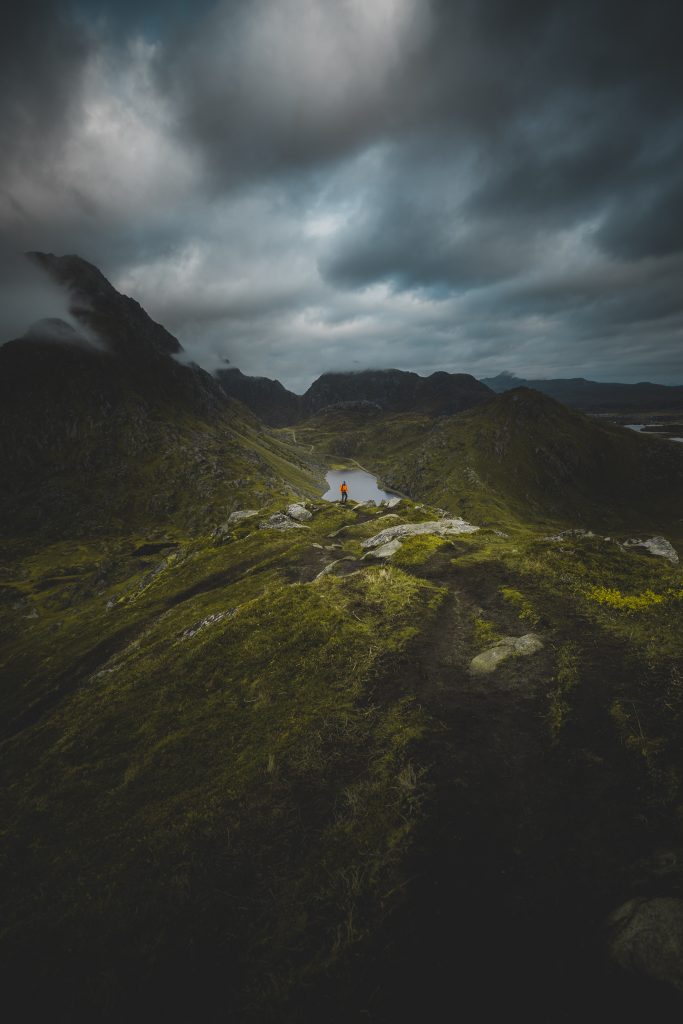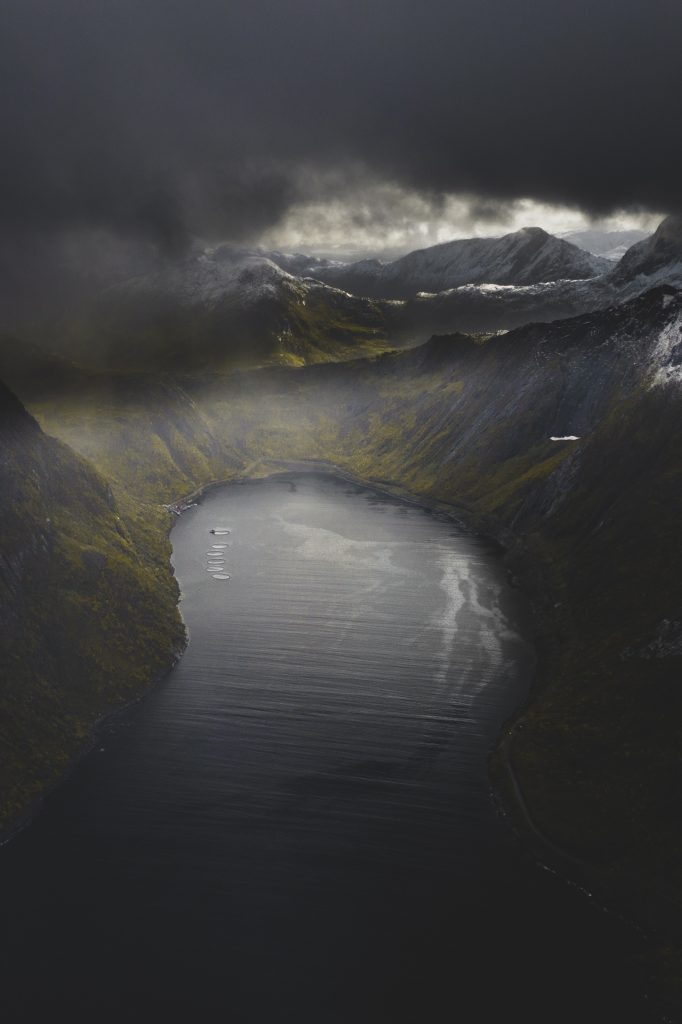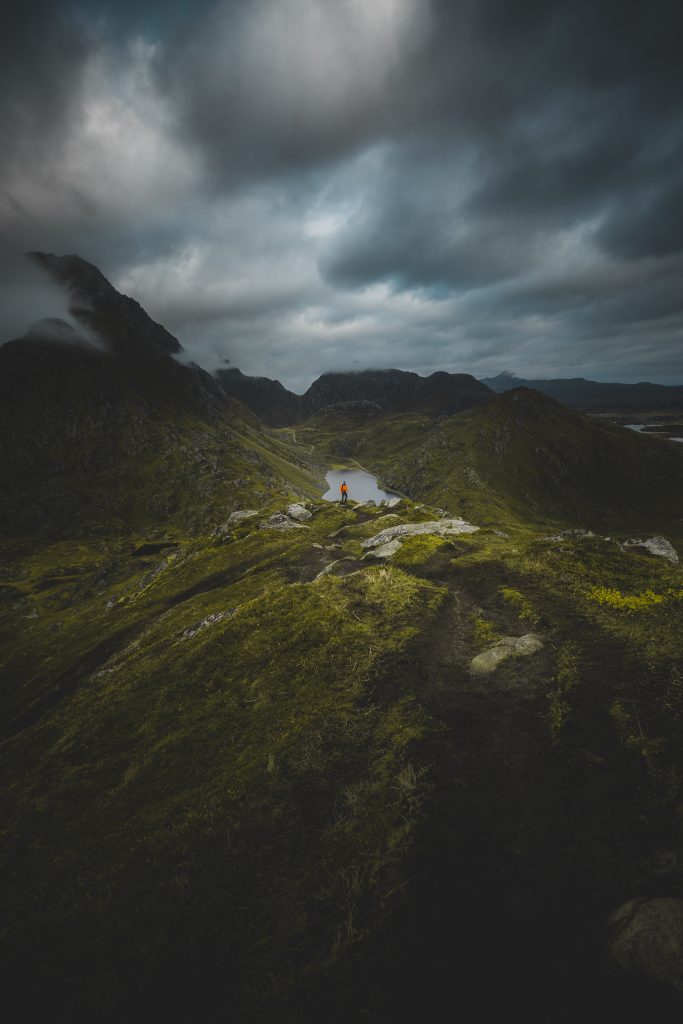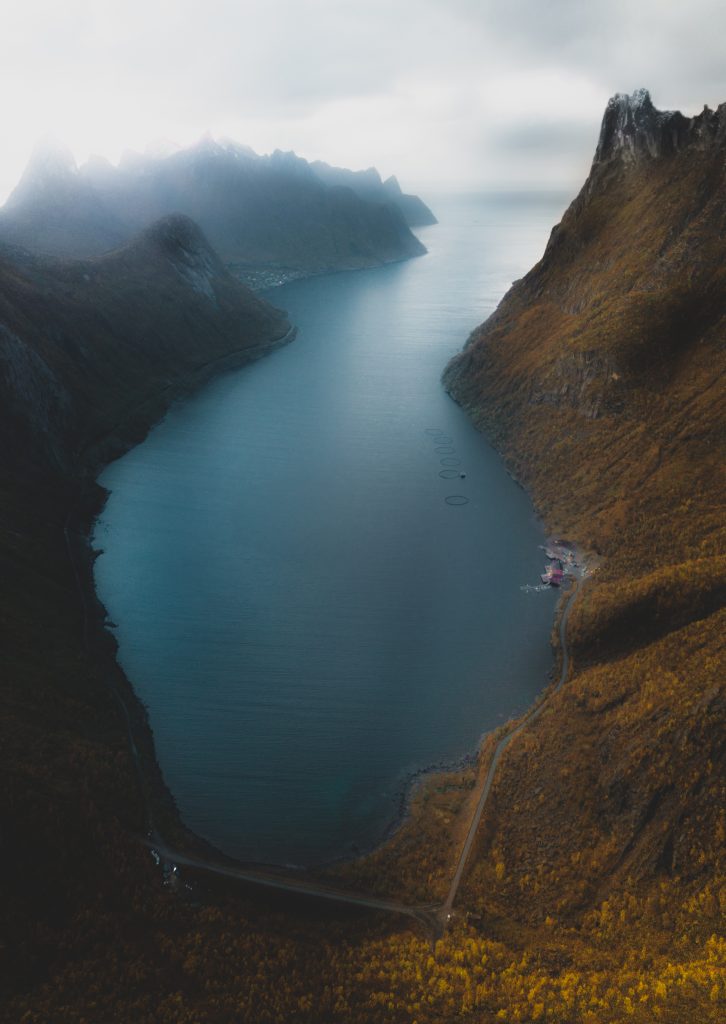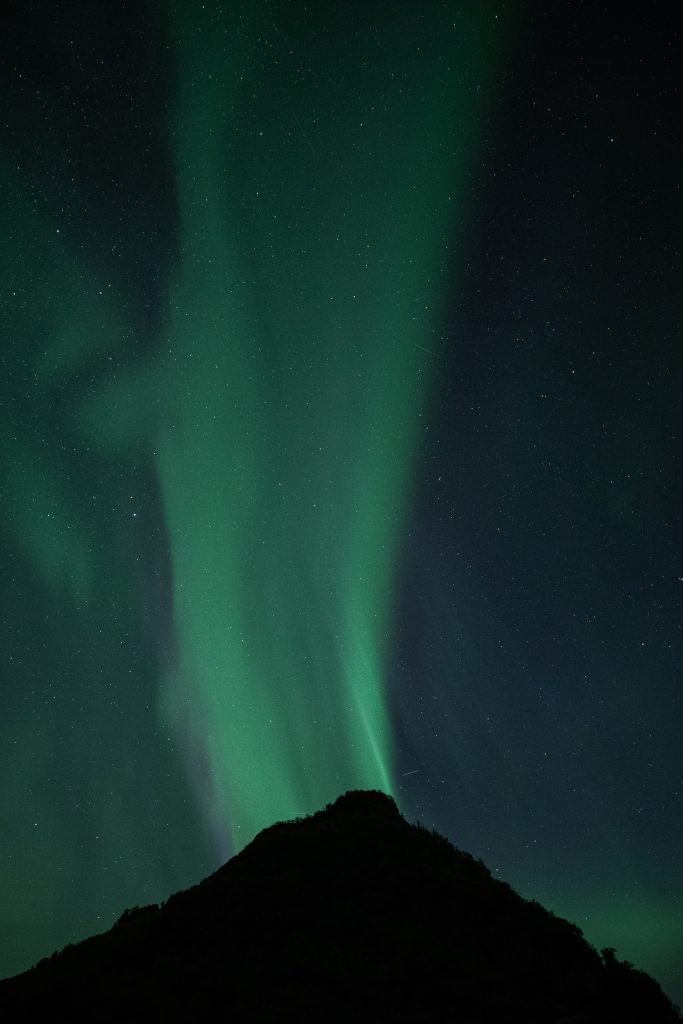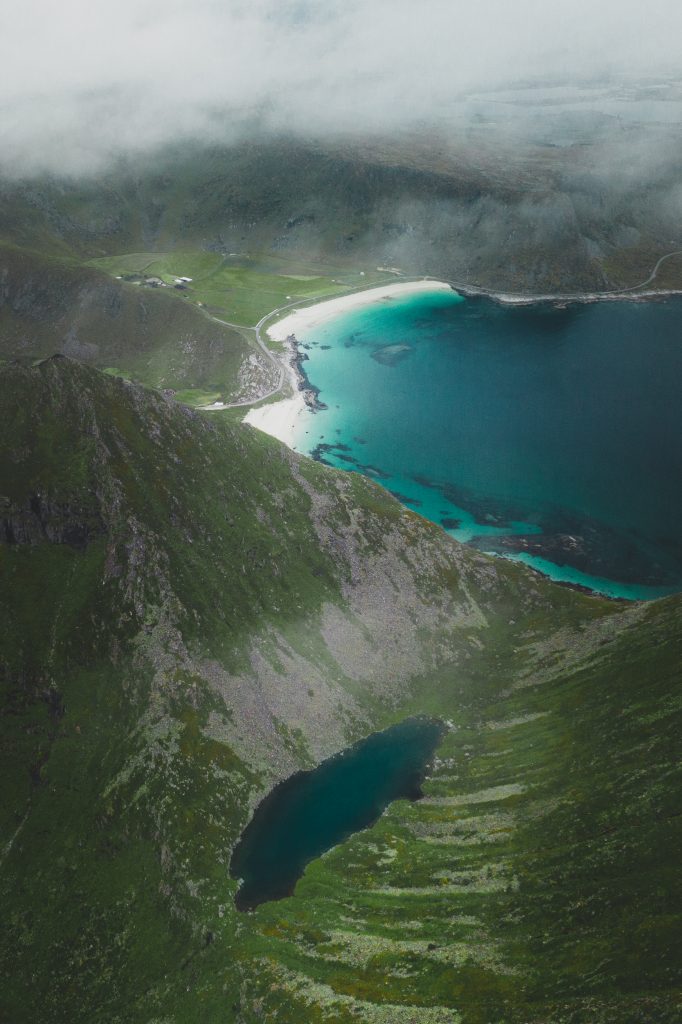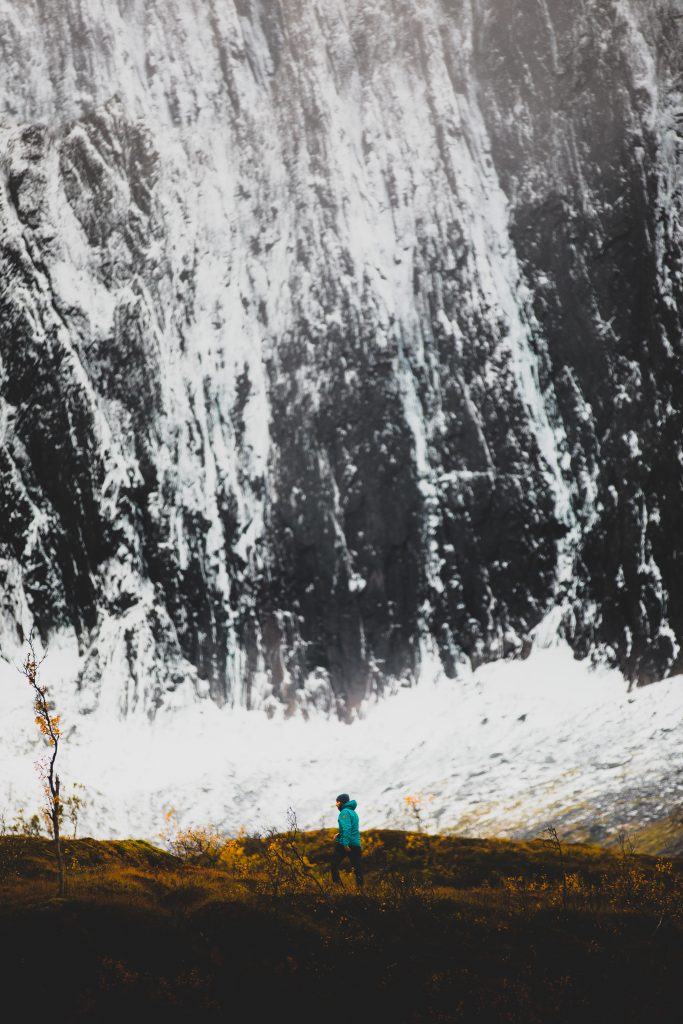NORWAY
DISTANCE
33KM
DIFFICULTY (1-10)
8
DAYS
10
HIGH POINT
880m
TREKKER
Pietro Ienca
Luigi Chiurchi
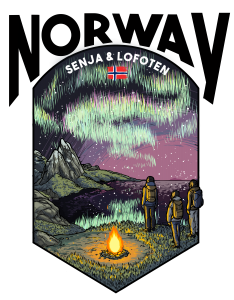
Lofoten are the characteristic islands on the Norwegian coast, well known for the excellent fish products, for the spectacular nature and for the small hidden villages.
Norway is such a large country that it is difficult to go through completely. The amount of environments and hidden gems to be discovered is immense. An inhabitant of Bergen, Stavanger or Oslo will probably tell you that it will be impossible for them to fully explore their lands in a single life. However, there are several routes that deserve to be experimented with attention, more than others. We landed in Bodø, ready to face one of these, surrounded by surprising nature.
Bodø is a town of over 45,000 inhabitants, located above the Arctic Circle. It was recently designated as the European Capital of Culture for the year 2024, attesting to its landscape-cultural value. It is the northernmost urban center ever to have acquired this title, a real record. From there, aboard a rented motorhome, a ten-day expedition began, to discover Senja and the Lofoten Islands. The idea of traveling with a similar vehicle allowed us to significantly amortize the travel costs, being able to take advantage of the ability to drive, dine and sleep while remaining on board. The large open spaces and the distances between one stage and the next pushed us further to go in this direction. However, several breaks along the way have not been disdained, so as to complete some sections on foot.
TripInYourShoes, after all, already from the name indicates the will to move with the trekking shoes fastened and the dust of the paths under the soles. The project was born in 2018 and since then it aims to relaunch a slow and responsible form of tourism, which has as its fulcrum the enhancement of the territory.
Armed with a camera and a desire to explore, therefore, we tasted four main places where our contact with Norwegian nature was powerful: Senja, Haukland Beach, Reinebringen and Kvalvika.
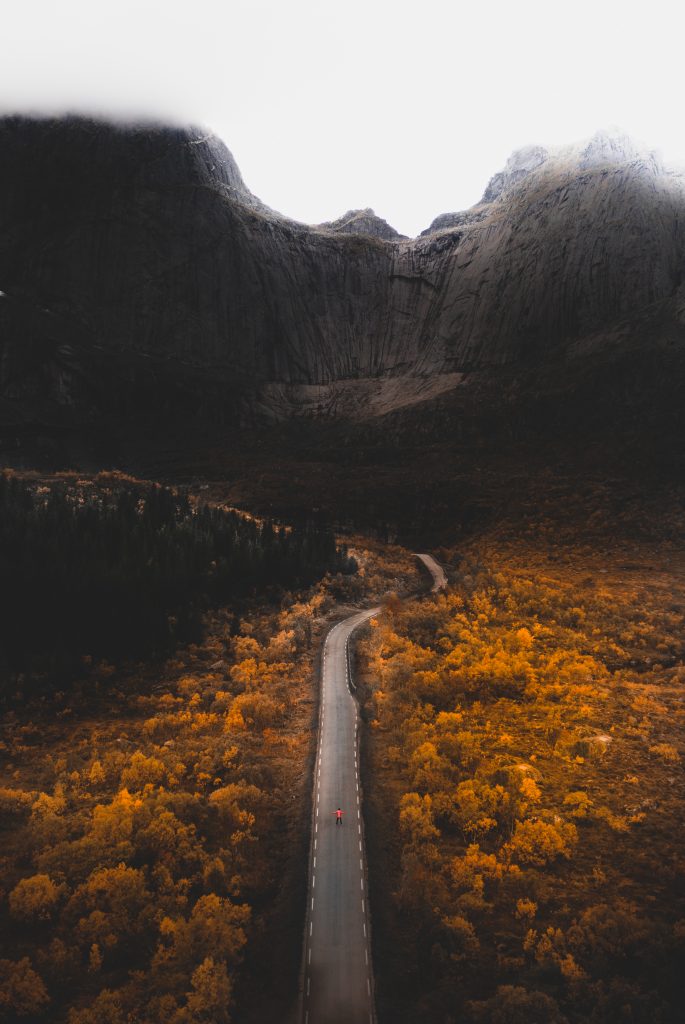
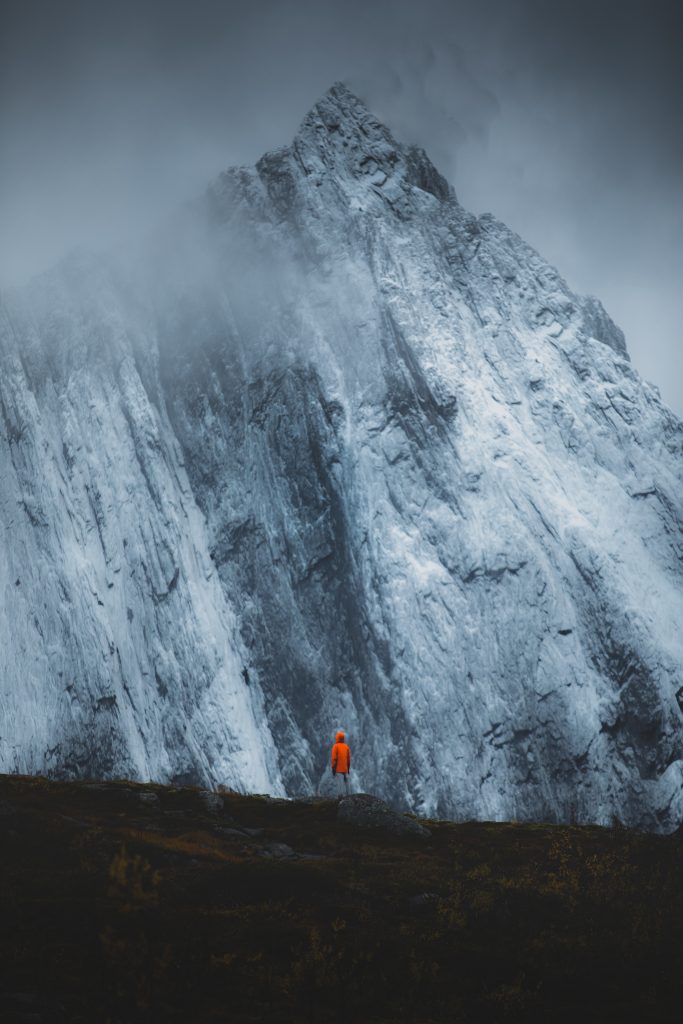
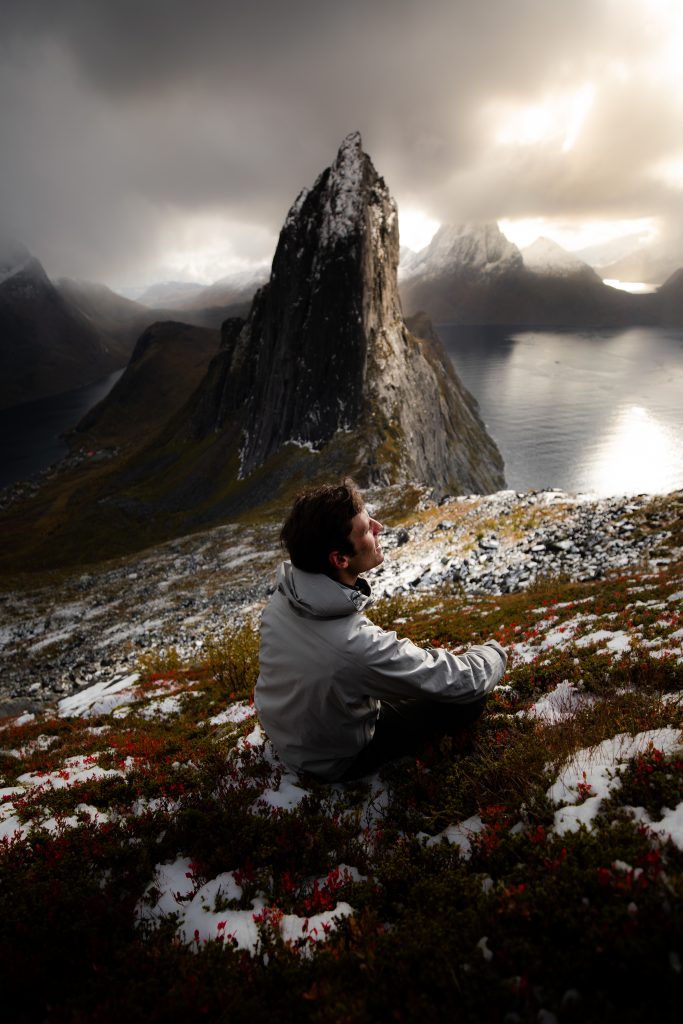
Senja is a place of mystical beauty, where the sea and the mountains seem to embrace in a timeless intertwining. In winter, the cold temperatures can easily reach -15 °, cloaking the entire coast in white, while in summer the climate is more temperate, even if a little snow persists all year round. And it is right above this snowy blanket, mixed with the spotted green vegetation, that we have collected some blueberries.
The show lay in all the elements: the rocky coast in front of us, plunging into the salty water of the North Sea; fingers stained with the purple juice of freshly eaten fruit; a few gusts of cold wind, which entered straight into the lungs, releasing a vital energy that only places like that can give you; the slight vibrations in the legs dictated by adrenaline.
A romantic painter of the early nineteenth century in such a place would have drawn inspiration for his canvases. Senja is a treasure trove of nature and landscapes. For those lucky enough to visit the northernmost strip of the Scandinavian country, this location must be contemplated.
The journey then moved to the Lofoten Islands, which form an archipelago made up of five main bodies: Austvagøv, Gimsøya, Vestvagøy, Flakstadøya, Moskenesøya. The set of emerged lands seems to draw a fern leaf on the map; several bridges connect the different parts of the island, making the journey interesting at every kilometer. Travel by land is concentrated almost exclusively on the E10, an asphalted road which in the cold months turns into an ice rink.
This stretches from the mainland to A ° i Lofoten (the last major urban center of the archipelago) for about 350 km, revealing breathtaking panoramic views and a nature of rare beauty. What is striking is the care of the roads; the camper in the summer months is a winning choice in this context: it allows you to proceed with your head freer from destinations and deadlines to respect, guaranteeing greater independence. In order not to lose Italian good taste, we brought Genoese pesto from home, so as to season a pasta cooked on board.
Proceeding with curiosity towards the west, we passed several towns,
which break the rhythm between one pristine landscape and another. Evenes, Leknes, Svolvaer, Hamnoy, up to Reine and finally A °.
It is easy to come across small fishing villages, where life goes slower and human affairs proceed with genuineness. The red wooden houses, so typical in these latitudes, overlook the cold sea and the reflections of the Nordic sun, pale in winter and imperious between May and August, when its light is maintained for most of the hours.
The fish is dried in the open air on some wooden structures, which can be seen on the roadside. The sea and fishing are essential elements in the history of these places, a history that dates back to the time of the Vikings; during the trip the sight of many white sand beaches seem to invite you to take a dip, and that’s exactly what we did, despite the fact that in September the temperature starts to drop significantly. They are places immersed in silence located a few steps from the road, which refer to typical Mediterranean scenarios, even if they are located over 2500km further north.
The contrast between the beaches and the snow on the tips of the ridges behind it is strong and exciting.
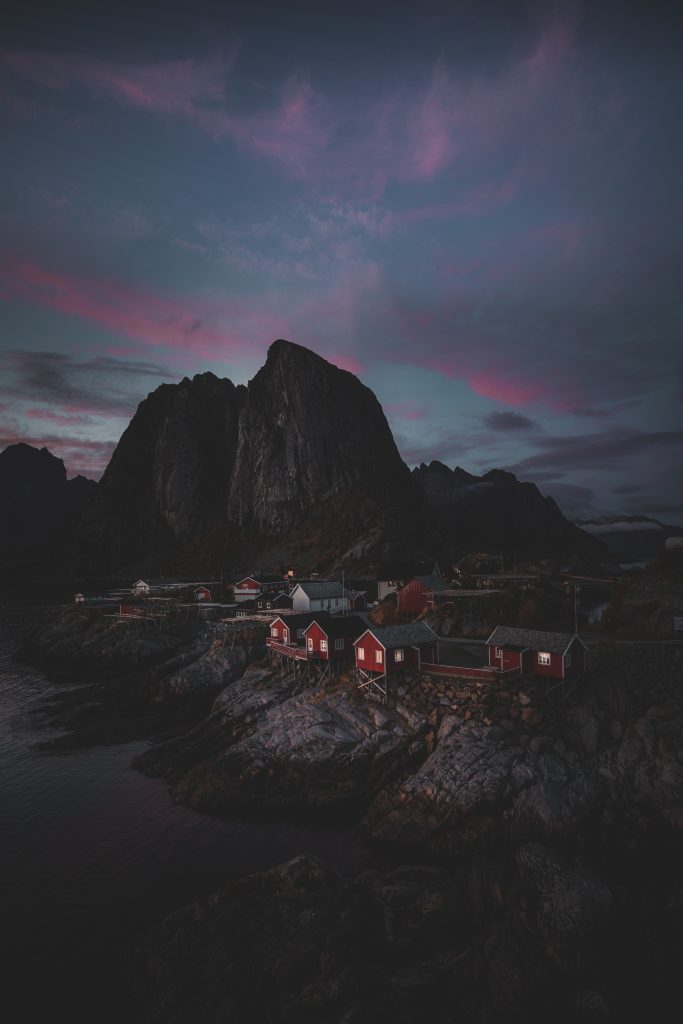
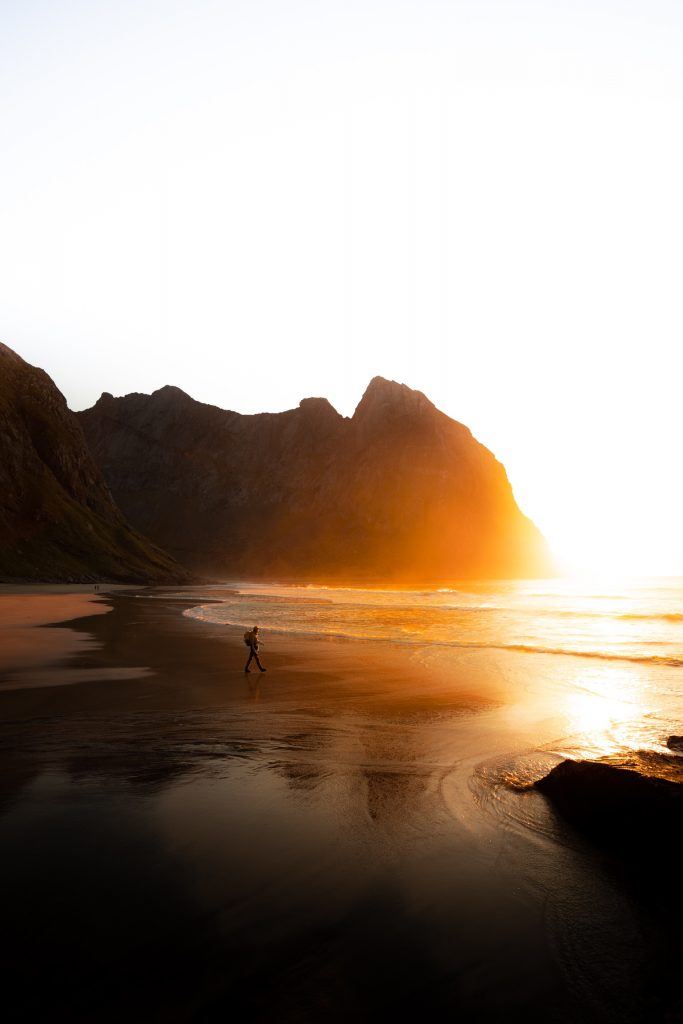
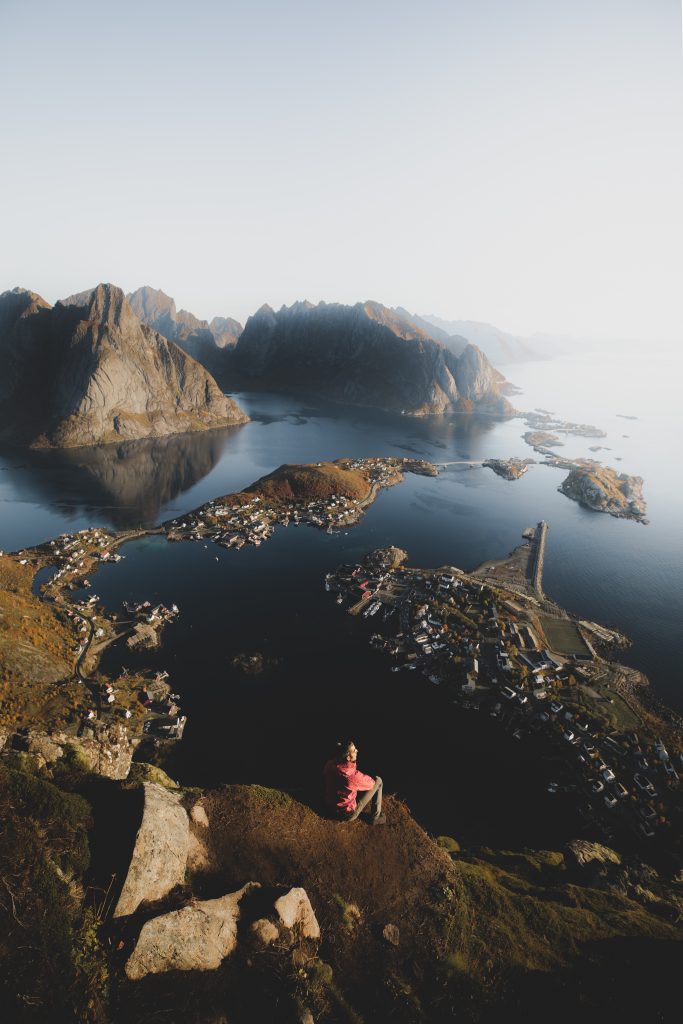
After all, it is equally out of the ordinary to see the coast from above, from the opposite point of view.
We happened to do it above Haukland Beach, where, lace up your shoes, we went up to Mount Mannen to be able to take some special photographs. The harshness of the landscape seems to take on a meaning, in a natural setting so far from the noise of the city and the frenzy of our lives. Even more impressive as views was the path that took us over to Klavika Beach, where the postcard view paid off for every effort made for the climb. It is absolutely impressive to see the grass in the meadows that stops at the edge of the rock walls; caressed by the sun we pushed ourselves to the limit, to enjoy the view of the bay from a different angle.
A place that has remained particularly close to our heart following this Norwegian experience is Reine, for two reasons. First of all, for the hike that we were able to complete here, accompanied by favorable weather conditions. From the small town, which has just over three hundred inhabitants and which is one of the flagships of local tourism, we have in fact taken the path to Reinebringen.
It is a route that includes a very long staircase of over 1500 steps, which climbing along the side of the mountain takes you up to 448 meters in height. From the top it is possible to appreciate one of the most iconic scenarios of all the Lofoten Islands, which combines natural landscapes with the ability of man to create one of the most spectacular roads in the world.
Bridges and islets, sea and mountains, houses and greenery. Peace of mind from up here is a less abstract idea.
And it was in Reine that we had our best night – here’s the second reason – thanks to a Northern Lights enjoyed in all its glory. Keeping calm to take our photo shots was not easy, the emotion of the moment was so strong. Like a wave that covers everything, the Northern Lights took the stage on that September night, filling our eyes for several minutes.
The verdant glows and purplish veils colored the sky, covering the firmament above our heads. The silence was broken only by our exclamations of amazement and by the breaking of the waves on the rocks: marvel! It is not so obvious in Norway to come across the Aurora, several variables come into play related to humidity, latitude, seasonal period and artificial lighting around it. We therefore consider ourselves very lucky to have fulfilled this dream.
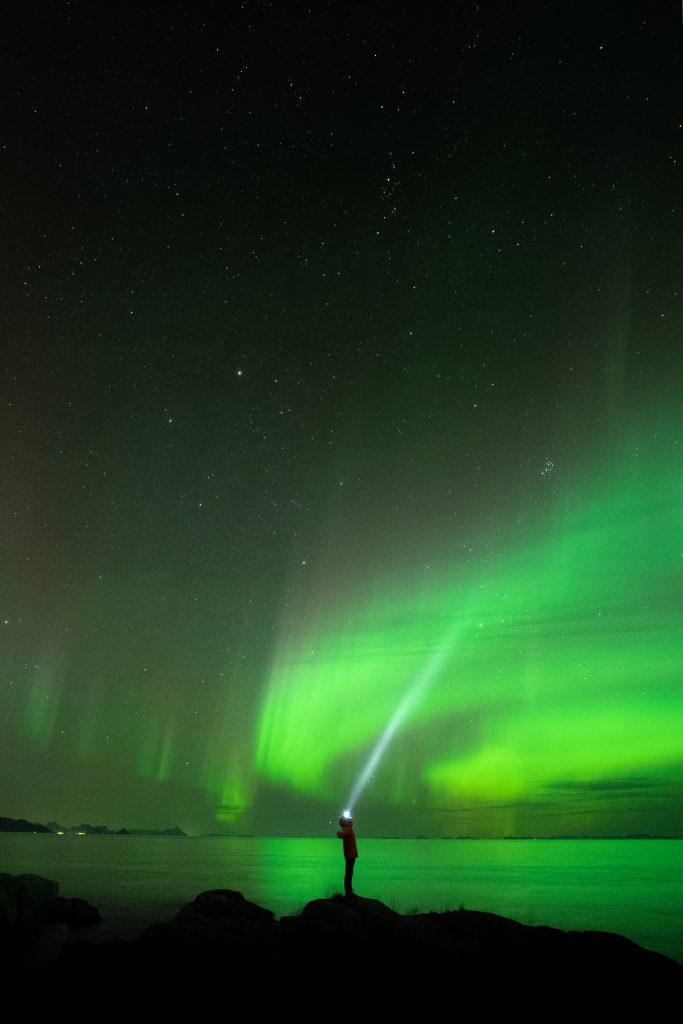
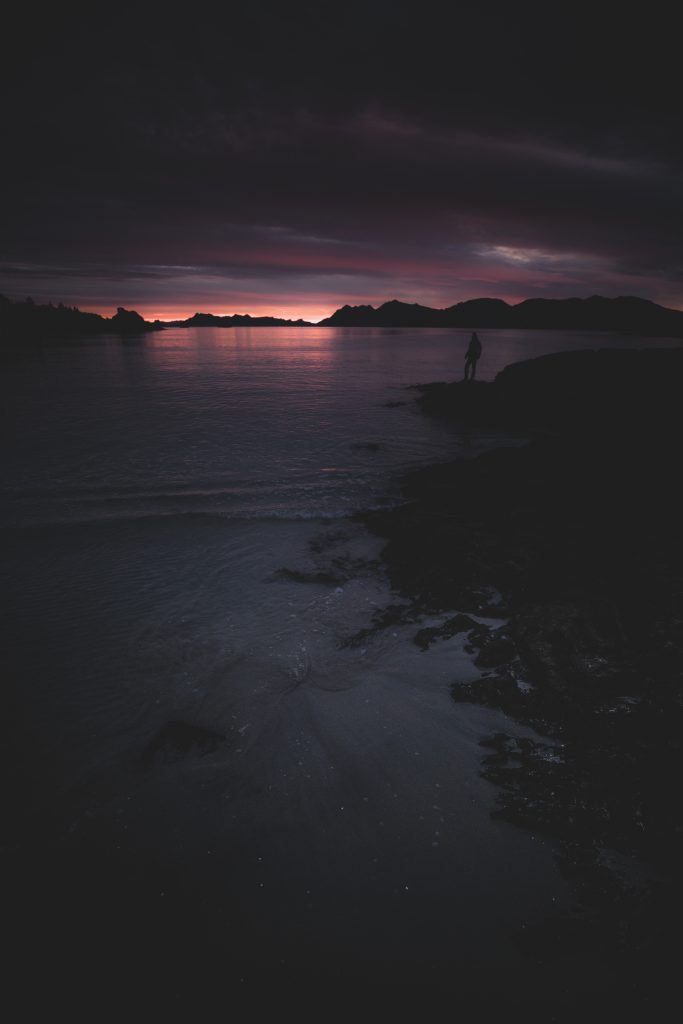
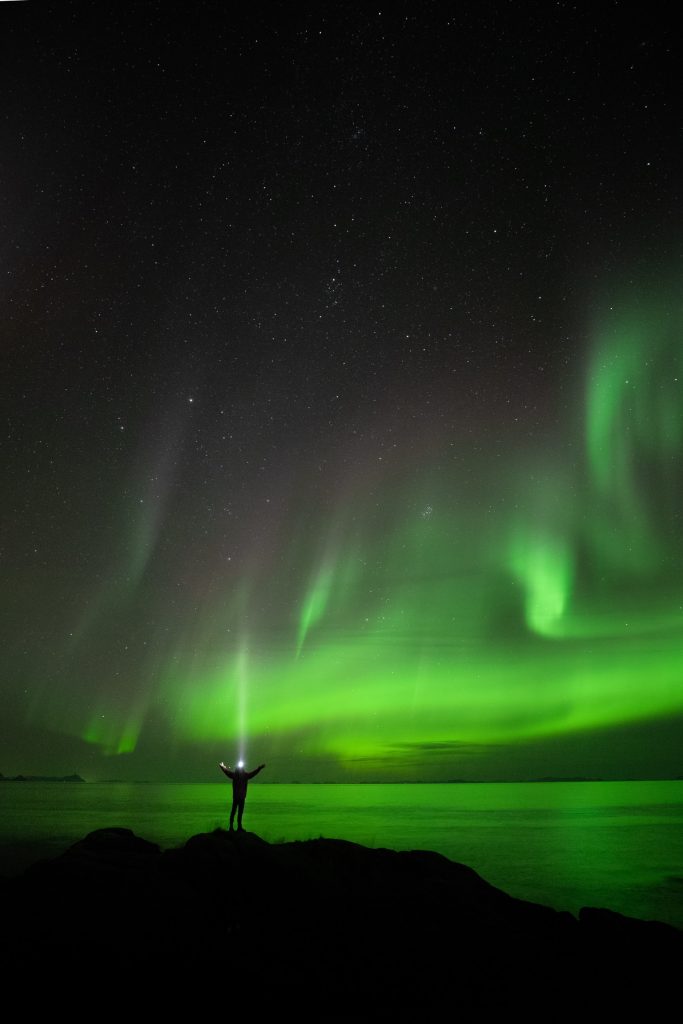
The expedition then went as far as A ° i Lofoten, the westernmost inhabited center of the archipelago. This develops on the slopes of a massif, which seems to rise from nothing with its clothing of rocks and bushes. This is where we found an excellent bakery, where we never would have thought; the quality of the products was appreciable, but the prices were rather expensive.
Furthermore, this place, which represents the paradise of cod fishermen, sees inside the presence of a stockfish museum, proudly boasted as a local specialty steeped in history.
Arriving here, at the tip of the Lofoten islands, we felt the sense of freedom that Norway can give you, a microcosm that combines excellent infrastructures with natural picturesque environments. After traveling over 1000 km in a few days, crossing a treasure trove of adventures, it was time to return to the mainland. Boarding a ferry directly from A ° i Lofoten, we completed a loop back to Bodø, where it all started.
Time to take stock. This trip allowed us to test the potential of a country that makes its landscape wonders a strong point. Driving on the E10 was an intoxicating experience. It is an emotional roller coaster, on which feelings of peace, adrenaline, amazement and excitement converge, depending on the views that unfold on each side. The Lofoten are touristically solid, but they maintain simple realities within them, in close connection with the territory. The fishing communities, the paths, the free beaches with no accommodation facilities, preserve a wild atmosphere for those looking for days full of energy. We at TripInYourShoes can say that we have returned home satisfied, with a series of images in our heads that we will hardly forget.
